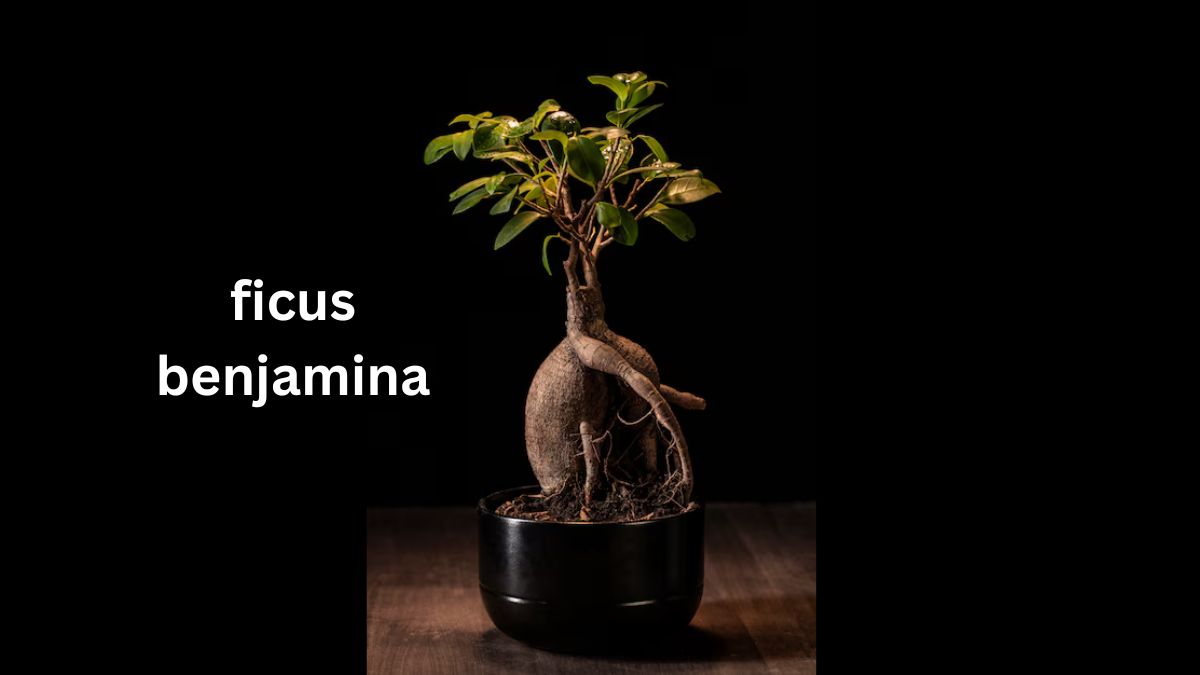Ficus Benjamina, commonly known as the weeping fig, is a popular choice among plant enthusiasts and interior decorators alike. With its lush green leaves that cascade gracefully from slender branches, this indoor tree brings a touch of nature indoors. If you’re seeking to enhance your living space with vibrant greenery, Ficus Benjamina might just be the perfect fit for you. But like any beautiful addition to your home, it requires proper care and attention to thrive.
Whether you’re new to houseplants or an experienced gardener looking to expand your collection, understanding how to nurture this stunning species is key. From watering routines and light requirements to pruning techniques and pest management, mastering these elements will ensure your Ficus Benjamina flourishes in all its glory. Let’s dive into the essential tips for keeping this magnificent indoor tree happy and healthy!
Why Choose Ficus Benjamina as an Indoor Tree?
Ficus Benjamina, commonly known as the weeping fig, is a popular choice for indoor trees. Its elegant, arching branches and glossy leaves add a touch of sophistication to any space.
Beyond aesthetics, this tree brings numerous benefits. It acts as an air purifier by removing toxins from the environment. This makes your home not only beautiful but also healthier.
Another reason to choose Ficus Benjamina is its adaptability. It thrives in various light conditions and can tolerate slight fluctuations in temperature. Whether you have bright sunlight or filtered shade, this tree can fit right into your lifestyle.
Moreover, it’s relatively low-maintenance once established. With just a little care regarding watering and pruning, you’ll find that it flourishes beautifully over time.
Its resilience allows even novice plant owners to experience success with houseplants without overwhelming complexity or constant worry about upkeep.
Essential Care Tips for Ficus Benjamina
Caring for your Ficus Benjamina can be a rewarding experience. It’s essential to provide the right environment and attention.
Start with watering. Allow the top inch of soil to dry out before adding more water. This prevents root rot while keeping your tree happy.
Soil quality matters too. A well-draining potting mix is ideal, ensuring that excess moisture escapes easily.
Light conditions play a vital role in its growth. Place your ficus near bright, indirect sunlight but avoid direct exposure which can scorch its leaves.
Temperature should remain stable, ideally between 65°F and 75°F (18°C to 24°C). Drafts or sudden temperature changes might stress the plant.
Regularly dust leaves gently with a damp cloth to keep them clean and healthy, allowing for better photosynthesis and overall vitality. Each small step contributes significantly to its thriving nature.
Watering and Soil Requirements
Ficus benjamina thrives best when its soil is kept consistently moist but not soggy. Water your tree when the top inch of soil feels dry to the touch. Overwatering can lead to root rot, so it’s crucial to ensure proper drainage.
Use a well-draining potting mix that retains some moisture while allowing excess water to escape. A blend containing peat moss and perlite works wonders for drainage and aeration.
During winter months, reduce watering frequency as the plant enters dormancy. Adjusting your routine helps maintain optimal health throughout seasonal changes.
Always monitor environmental factors like humidity and temperature, as they can affect how quickly the soil dries out. Pay attention to your ficus’s needs, and you’ll create a thriving indoor oasis in no time!
Light and Temperature Needs
Ficus benjamina thrives in bright, indirect light. Place your tree near a window that filters sunlight to create the ideal environment. Direct sun can scorch its delicate leaves, leading to browning edges.
Temperature is another critical factor for your ficus. It prefers warmth and should be kept in a range of 60°F to 75°F (15°C to 24°C). Avoid exposing it to drafts or sudden temperature changes, as this can stress the plant.
If you notice leaf drop, check the surroundings. A cold draft or extreme heat from heating vents might be the culprit.
Maintaining consistent lighting and temperature helps ensure your Ficus benjamina remains healthy and vibrant throughout the year. Adjustments may be necessary with seasonal changes; keep an eye on how your indoor tree responds each month.
Pruning and Propagation Techniques
Pruning is essential for maintaining the shape and health of your ficus benjamina. Regular trimming encourages bushier growth and removes any dead or yellowing leaves. Aim to prune in spring when the tree is actively growing.
Use clean, sharp scissors or pruning shears to make precise cuts. Focus on thinning out dense areas while keeping a balanced structure.
Propagation can be an exciting way to expand your indoor garden. The easiest method involves stem cuttings. Cut healthy stems about 6 inches long, ensuring each has at least one leaf node.
Place the cuttings in water or directly into well-draining soil. If you opt for water propagation, change it weekly until roots develop—usually within a few weeks.
Once established, transplant them into pots with quality potting mix for optimal growth and watch them thrive alongside their parent plant!
Common Pests and Diseases
Ficus Benjamina, while generally resilient, can face challenges from pests and diseases. Common pests include spider mites and aphids. These tiny intruders often go unnoticed until they cause significant damage.
Spider mites thrive in dry conditions. They leave behind fine webbing on the leaves. Regular misting helps deter them.
Aphids cluster on new growth and suck sap, leading to curled or distorted leaves. You can wash them off with a gentle stream of water or use insecticidal soap for more stubborn infestations.
Root rot is another concern, stemming from overwatering or poorly draining soil. Signs include yellowing leaves and a mushy stem base.
Keep an eye out for leaf spots as well; these could signal fungal infections due to high humidity levels combined with stagnant air circulation. Addressing these issues promptly ensures your Ficus Benjamina remains healthy and vibrant throughout its life indoors.
Decorating with Ficus Benjamina: Ideas and Inspiration
Ficus Benjamina, with its lush green leaves and elegant structure, makes a striking addition to any indoor space. Consider placing it in a stylish planter that complements your decor. A woven basket or a sleek ceramic pot can elevate its aesthetic.
For added flair, use multiple Ficus plants at varying heights to create an eye-catching display. Group smaller varieties on shelves or window sills while showcasing larger specimens as statement pieces in corners.
Enhance your living areas by positioning Ficus Benjamina near natural light sources like windows. This not only boosts the plant’s health but also brightens the room.
Incorporate themed decorations around your Ficus tree for seasonal changes. Add festive lights during holidays or colorful pots in spring to keep things fresh and lively throughout the year. Let your creativity flow and enjoy the vibrant energy this beautiful plant brings into your home!
Troubleshooting Common Issues
Ficus benjamina can be a resilient indoor tree, but it’s not immune to issues. Yellowing leaves might signal overwatering. Make sure your pot has proper drainage and allow the soil to dry between waterings.
If you notice leaf drop, this could indicate stress from sudden changes in environment or temperature fluctuations. Gradually acclimate your plant when moving it to a new location.
Pests like spider mites or scale can also pose problems. Regularly inspect the undersides of leaves for these intruders. A mild insecticidal soap can help eliminate them if detected early.
Brown leaf tips often stem from low humidity levels. Consider placing a humidifier nearby or misting your ficus occasionally to boost moisture around it.
With careful observation and timely action, most concerns with ficus benjamina can be managed effectively, ensuring your tree continues thriving indoors.
Conclusion
Caring for a Ficus Benjamina can be a rewarding experience. This beautiful indoor tree not only enhances your space with its lush foliage but also improves air quality. By following the tips outlined in this guide, you can ensure that your ficus thrives.
Remember to monitor watering and soil conditions closely, as these are critical for healthy growth. Providing adequate light and temperature will help maintain its vibrant leaves. Regular pruning encourages bushiness while propagation techniques allow you to expand your collection or share with friends.
Stay vigilant against common pests and diseases, treating any issues promptly to keep your plant healthy. With creativity, you can integrate Ficus Benjamina into various decor styles, making it a versatile choice for any room.
With the right care approach, you’ll enjoy the beauty of this remarkable tree for years to come. Embrace the journey of nurturing your Ficus Benjamina; it’s sure to reward you with lush greenery and tranquility in your home environment.










